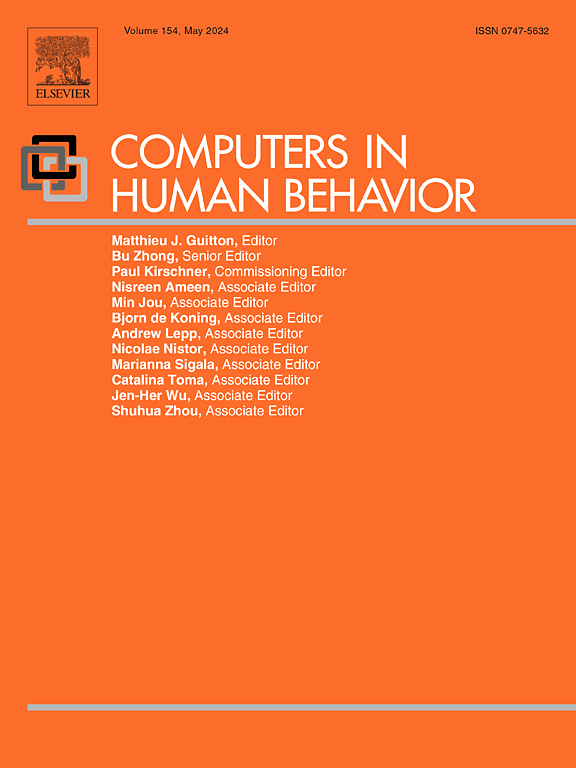Effects of smartphone restriction on cue-related neural activity
IF 9
1区 心理学
Q1 PSYCHOLOGY, EXPERIMENTAL
引用次数: 0
Abstract
With the increasing popularity of smartphones in the past decades, physical, social, and psychological consequences of excessive smartphone use (ESU) have been increasingly debated. Cue-reactivity (CR) has been discussed as a core mechanism driving this behavior, and previous studies have highlighted distinct neural mechanisms underlying CR in individuals with ESU. Here, we used a functional MRI (fMRI) CR-paradigm to investigate the effects of smartphone restriction over 72 h in 25 young adult smartphone users. The CR-task used contrasts of images showing smartphones vs. neutral stimuli and active vs. inactive smartphones. Region-of-interest based correlations with psychometric scores were performed, and activity changes after 72 h were investigated on a neurochemical level using neurotransmitter probability maps. CR-related brain activity changes over time were most prominent in the nucleus accumbens and anterior cingulate cortex (p < 0.001). Such changes were significantly associated with dopamine- and serotonin-receptor probabilities (pFDR < 0.05). Significant associations between parietal cortex activity and craving were detected (p < 0.05). This study provides evidence for CR-related modulation of neural activity in key regions of salience, motor-inhibition, and reward processing after 72 h smartphone restriction. The identified neural mechanisms may substantially promote addictive behavior in people at risk for ESU.
智能手机限制对线索相关神经活动的影响
在过去的几十年里,随着智能手机的日益普及,过度使用智能手机(ESU)对身体、社会和心理的影响也越来越受到争议。线索反应性(CR)被认为是驱动这种行为的核心机制,之前的研究强调了ESU患者CR的不同神经机制。在这里,我们使用功能磁共振成像(fMRI) cr范式研究了25名年轻成年智能手机用户在72小时内限制智能手机的影响。这项cr任务使用了智能手机与中性刺激、活跃智能手机与不活跃智能手机的图像对比。利用神经递质概率图在神经化学水平上研究72小时后的活动变化。cr相关的脑活动随时间变化在伏隔核和前扣带皮层最为突出(p <;0.001)。这种变化与多巴胺和血清素受体概率显著相关(pFDR <;0.05)。发现顶叶皮层活动与渴望之间存在显著关联(p <;0.05)。本研究为智能手机限制72小时后,显著性、运动抑制和奖励加工关键区域的神经活动的cr相关调节提供了证据。已确定的神经机制可能会极大地促进ESU风险人群的成瘾行为。
本文章由计算机程序翻译,如有差异,请以英文原文为准。
求助全文
约1分钟内获得全文
求助全文
来源期刊

Computers in Human Behavior
Multiple-
CiteScore
19.10
自引率
4.00%
发文量
381
审稿时长
40 days
期刊介绍:
Computers in Human Behavior is a scholarly journal that explores the psychological aspects of computer use. It covers original theoretical works, research reports, literature reviews, and software and book reviews. The journal examines both the use of computers in psychology, psychiatry, and related fields, and the psychological impact of computer use on individuals, groups, and society. Articles discuss topics such as professional practice, training, research, human development, learning, cognition, personality, and social interactions. It focuses on human interactions with computers, considering the computer as a medium through which human behaviors are shaped and expressed. Professionals interested in the psychological aspects of computer use will find this journal valuable, even with limited knowledge of computers.
 求助内容:
求助内容: 应助结果提醒方式:
应助结果提醒方式:


